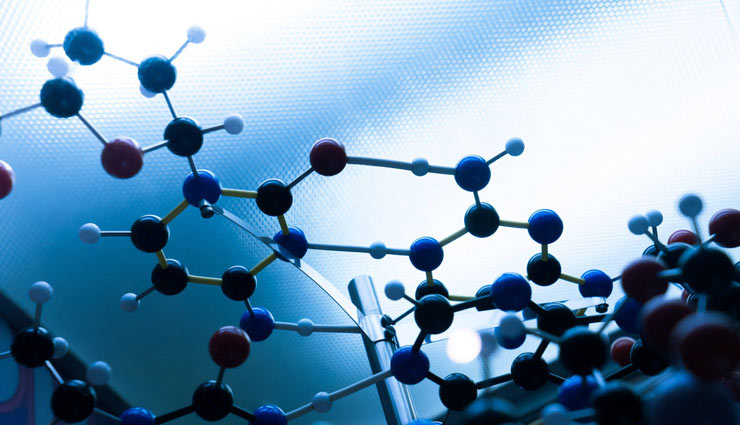All living organisms use amino acids to make proteins. The human body needs 20 different amino acids for proper functioning. Nine of these amino acids are called essential amino acids. You should get essential amino acids by eating healthy food. You will read everything you need to know about amino acids in this article. Stay with us.
What is an amino acid?
Amino acids are building blocks of protein; proteins are long chains of amino acids. The body has thousands of proteins, each with specific and essential functions. Each protein has its sequence of amino acids. This sequence causes proteins to have different shapes and processes in the body.
Amino acids are like letters of the alphabet. When we combine letters in different ways, we make other words. The same thing applies to amino acids; when we combine them differently, we make other proteins.
Amino acid structure
Amino acid is an organic chemical substance. Organic chemicals contain carbon-hydrogen bonds. All amino acids have the same basic structure. Each molecule has one central carbon atom connected to 1 primary amino group, one carboxylic acid group, one hydrogen atom, and 1 R group or side chain group. The R group is what distinguishes amino acids from each other. The R group determines the chemical nature of each amino acid. The chemical nature determines how the amino acid interacts with other amino acids and their environment.
Types of amino acids
1. Essential amino acids
The body needs 20 different types of amino acids to function correctly. These 20 amino acids are combined in various ways to make proteins in the body. The body makes hundreds of amino acids, but it cannot make essential amino acids. Nine essential amino acids are:
- Histidine: Histidine helps to make a type of neurotransmitter called histamine. Histamine is essential in immune function, food digestion, sleep, and sexual function.
- Isoleucine: Isoleucine deals with muscle metabolism and immune system function. It also helps to make hemoglobin and regulate energy.
- Leucine: The body uses leucine to make protein and growth hormones. It also helps to grow and repair muscle tissue, heal wounds and regulate blood sugar levels.
- Lysine: Lysine plays a role in the production of hormones and energy and is also essential for the better functioning of the immune system.
- Methionine: Methionine plays a role in body tissue growth, metabolism, and detoxification. In addition, it helps in the absorption of essential minerals, including zinc and selenium.
- Phenylalanine: The body converts this amino acid into the neurotransmitters tyrosine, dopamine, epinephrine, and norepinephrine. This amino acid plays a vital role in the structure and function of proteins and enzymes and the production of other amino acids.
- Threonine: This amino acid is the central part of structural proteins such as collagen and elastin, which are essential in connective tissue components. It also plays a role in fat metabolism and immune system function.
- Tryptophan: Tryptophan helps maintain nitrogen balance in the body, regulates mood, appetite, and sleep, and plays a role in making a neurotransmitter called serotonin.
- Valine: Valine plays a role in muscle growth, tissue regeneration, and energy production.
2. non-essential amino acids
The remaining 11 amino acids the body produces are called non-essential amino acids. Non-essential amino acids are:
- alanine;
- arginine;
- asparagine;
- aspartic acid;
- cysteine;
- glutamic acid;
- glutamine ;
- glycine ;
- proline;
- serine;
- Tyrosine.
3. Conditional amino acids
Some non-essential amino acids are also called conditional amino acids; they are considered essential only when sick or stressed, and the body cannot make them because of some disorder. It would be best if you supplied them with eating food. Conditional amino acids are:
- arginine;
- cysteine;
- glutamine;
- tyrosine;
- glycine;
- ornithine;
- proline;
- Serin
What do amino acids do?
The body uses amino acids to make proteins. The types of amino acids and how they are combined determine the function of each protein. Amino acids play a role in many essential body functions, such as:
- decomposition of food;
- growth and repair of body tissue;
- making hormones and brain chemicals (neurotransmitters);
- providing an energy source;
- maintaining the health of skin, hair, and nails;
- muscle building ;
- strengthen the immune system ;
- We are maintaining the normal function of the digestive system.
Amount of amino acid required
You don’t need to eat foods containing amino acids at every meal, but eating a certain amount throughout the day is important. The recommended intake of essential amino acids per day (per 1 kg of body weight) is:
- Histidine: 14 mg
- Isoleucine: 19 mg
- Leucine: 42 mg
- Lysine: 38 mg
- Methionine: 19 mg
- Phenylalanine: 33 mg
- Threonine: 20 mg
- Tryptophan: 5 mg
- Valine: 24 mg
What foods contain amino acids?
Essential amino acids are found in many foods. The best sources of amino acids are animal proteins such as beef, chicken, and eggs. The body quickly absorbs animal proteins containing all nine essential amino acids are called complete proteins. Some of these foods include:
- Beef;
- chicken ;
- fish ;
- eggs ;
- dairy;
- soy ;
- quinoa ;
- buckwheat _
Foods that contain only some essential amino acids, not all of them, are called incomplete proteins. Nuts, seeds, beans, and some grains are included in this category. If you are a vegetarian or vegan, you should consist of several types of incomplete protein in your diet to ensure you are getting all nine essential amino acids.
The benefits of taking essential amino acid supplements
While essential amino acids can be obtained from a wide variety of foods, consuming more of them in supplement form has several health benefits.
1. It May improve the mood
Tryptophan is essential for the production of serotonin. Serotonin regulates mood, sleep, and behavior. Low serotonin levels are associated with depression and sleep disorders, and according to various studies, taking tryptophan supplements may help reduce symptoms of depression and improve mood. According to a review of 11 scientific studies, consuming 0.14 to 3 grams of tryptophan daily reduces anxiety and enhances a positive attitude.
2. It May improve athletic performance and recovery
Many take valine, leucine, and isoleucine supplements to reduce fatigue, enhance athletic performance, and stimulate muscle recovery after exercise. In a small 2017 study, resistance training athletes took leucine, isoleucine, and valine supplements. These people had better muscle performance and recovery and less muscle pain than others. Amino acid is also helpful for bodybuilding.
3. It May be useful for wound healing and surgery
Taking amino acid supplements may be helpful for people recovering from surgery. By examining 243 people with hip fractures, it was found that people who took amino acid supplements for two weeks after surgery had fewer complications than those with standard nutrition.
In another study, taking essential amino acid supplements caused less muscle loss in older adults recovering from knee surgery.
Difference between humic acid and amino acid
Amino acid is rich in organic nitrogen sources and is directly absorbed by plants. The difference between these 2 is that crops absorb amino acids but cannot directly absorb humic acid.
you say
Now you know what amino acid is and what it is used for. Are you getting enough amino acids? Have you ever taken an amino acid supplement? Please share your valuable comments and experiences with our dear users and us.
Warning! This article is only for educational purposes; to use it, it is necessary to consult a doctor or specialist.




Nice post. I learn something new and challenging on websites I stumbleupon every day. It will always be useful to read through articles from other writers and use a little something from other websites.
thank you